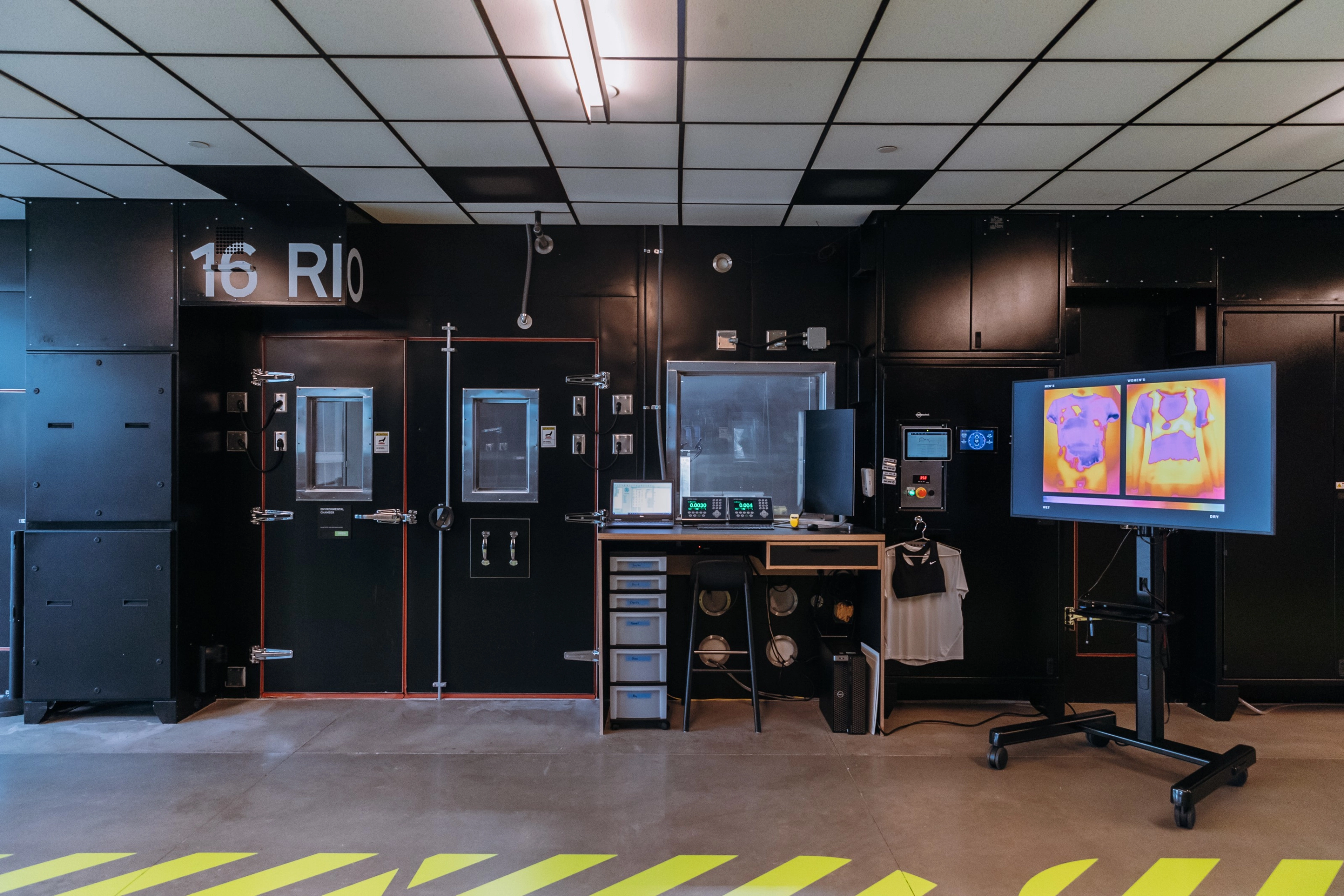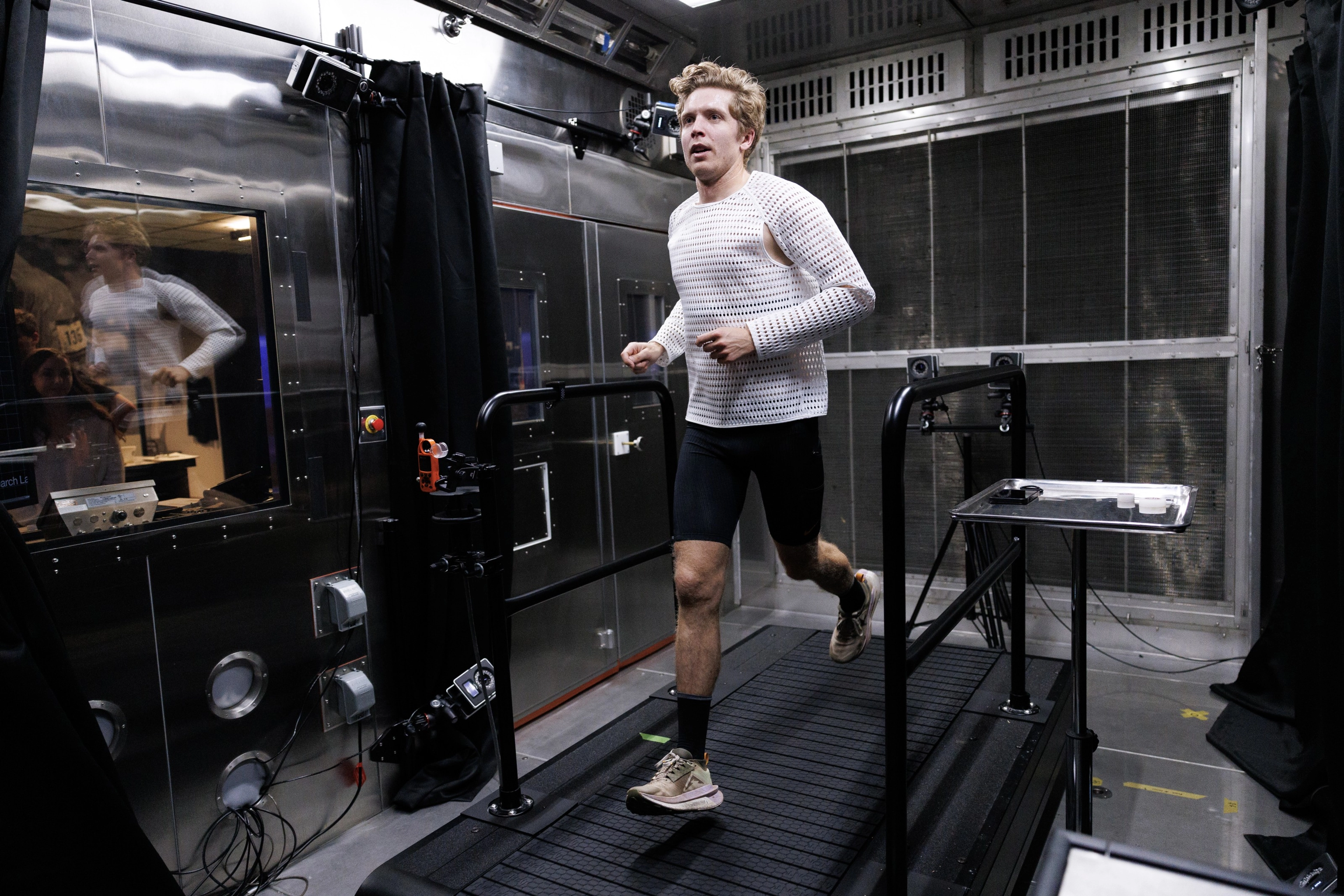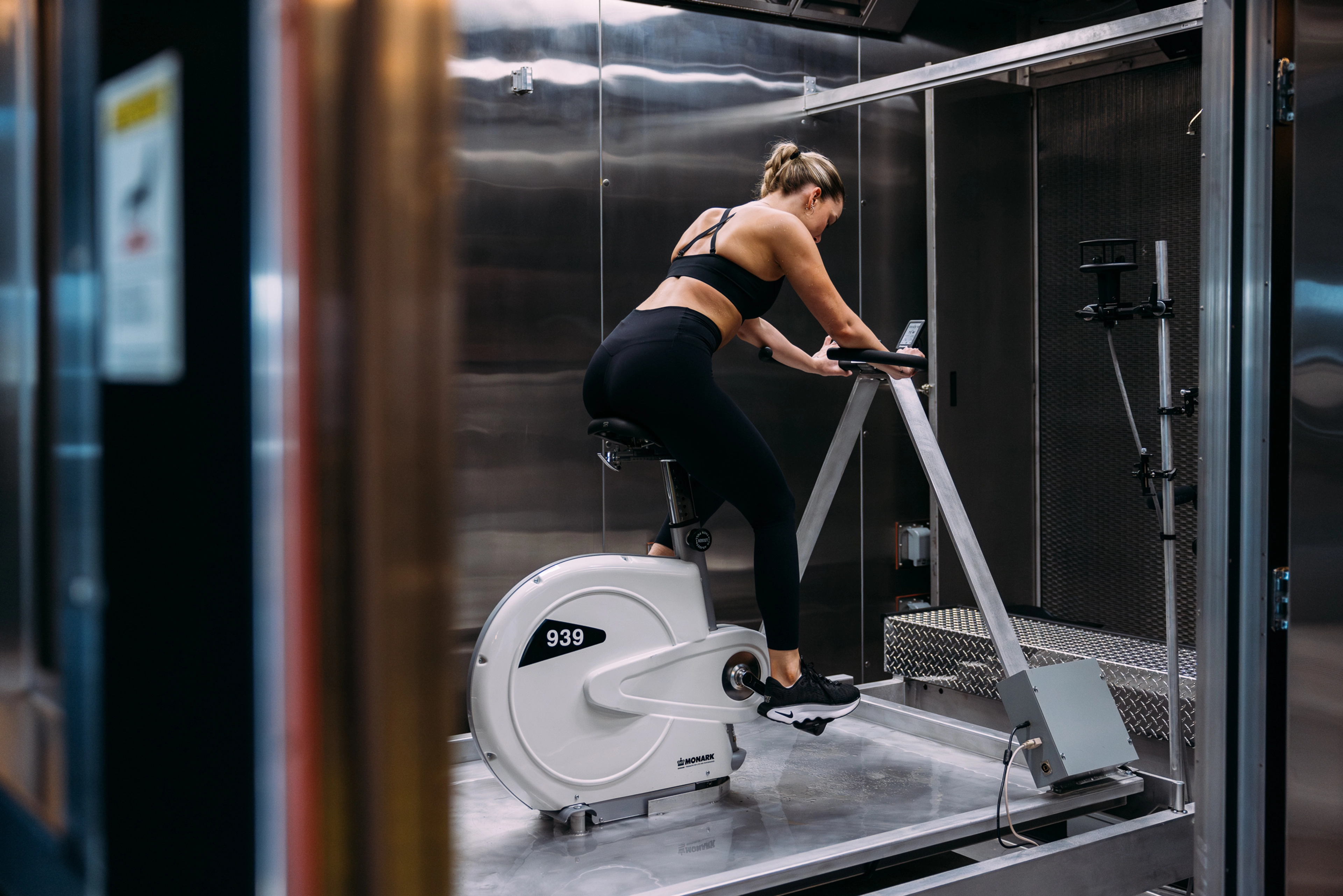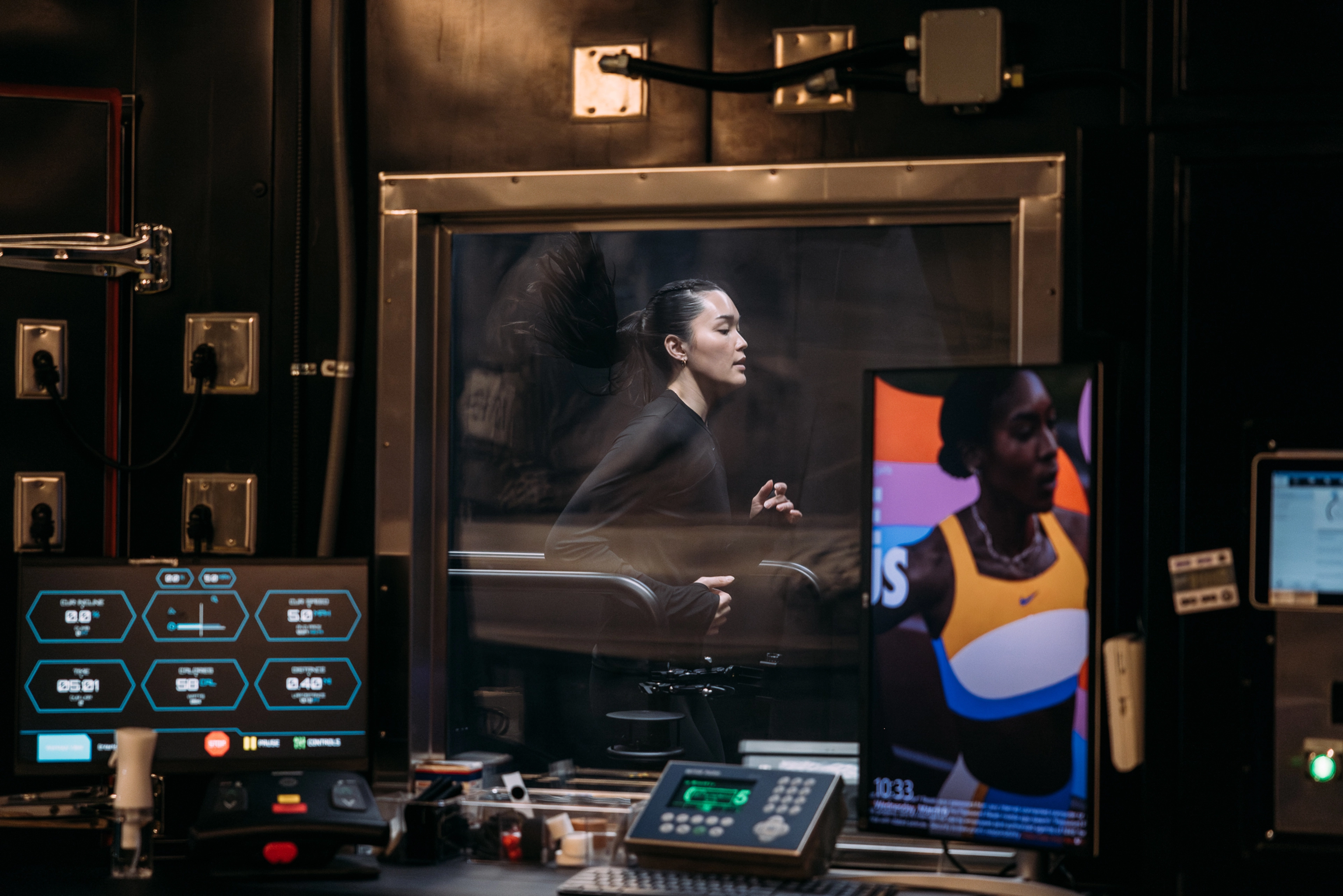The NSRL Environmental Chambers
- November 06, 2025
Athletes don’t compete in a vacuum, but having them train in a controlled setting can help Nike researchers design the most innovative apparel to help them compete. Introducing the environmental chambers in the Nike Sport Research Lab (NSRL), which can mimic nearly any environment an athlete might face.
What They Do
Thermoregulation, or the study of how you regulate your temperature when you're moving, happens in your body through a natural, physiological response: sweat. When your sweat evaporates, your body can cool down.
Nike's environmental chambers help researchers study thermoregulation up close and personal with athletes. The NSRL has three different chambers for athlete testing, each named after a different Olympic venue (Rio, Sydney and Athens) and each studying the crossover between thermoregulation, apparel design and athlete performance. The chambers allow scientists to test how different variables impact either the heat load on an athlete's body or the regulation of an athlete's body temperature through sweat evaporation.
In the chambers, researchers can dial the temperature anywhere from -4 degrees F to 122 degrees F. Radiant heat with special bulbs can match the intensity of the sun's rays (there’s variance within perceptions of “hot”; anyone who does a summertime road run in Los Angeles will tell you it’s a very different setting from running in the streets of Miami). Scientists can also generate wind speeds up to 11 mph.
“In the chambers, we can fine-tune our regulation of temperature, humidity, airflow, and radiant heat so we can re-create the conditions in which athletes perform,” says Grant Simmons, PhD, Sr. Principal Researcher, Thermoregulation. “These tools help us understand athlete challenges, their interaction with clothing, and the benefits of product solutions designed to make them better."
What They Help Us Do
In the Rio chamber, scientists study athletes in the heat to identify new opportunities for Nike DriFIT innovation. Here, the NSRL uses custom methods, developed specifically for the LeBron James Innovation Center, where the NSRL is housed, to study an athlete’s sweating efficiency, or the percentage of your sweat that evaporates to cool you during exercise. If you have sweat pouring down your forehead or dripping down your back or soaking your shirt or bra, you’re not sweating efficiently. The more efficiently you sweat, the slower you dehydrate, and the longer you can run, dance, play basketball, or compete in your chosen sport. As an athlete works out on a stationary bike, scientists use several different weight scales and custom engineered equipment to break down their sweating response into separate parts. By isolating the evaporated sweat from the sweat that drips off the body, beads up on your skin, or is absorbed and retained in clothing fabric, scientists can map the outcome of every gram of sweat secreted during exercise. This allows them to study the sweating response like they’d study a household budget; identifying areas of waste and opportunities to be more efficient by reducing excess sweat that dehydrates the athlete, but doesn’t cool them down.
Nike scientists also need to pinpoint where athletes tend to sweat so apparel designers can embed sweat-wicking properties in high-need areas. This is the kind of detective work that happens in the Sydney chamber. Recorded by surface-mounted cameras, athletes wear a range of body sensors as they run on a treadmill. The sensors cover a range of data: skin temperature, heart rate, core body temperature and more. The goal of these studies is to understand the distinct needs for individual athletes during exercise, revealing preferences based on different metabolic states and environments. After an athlete works out, they drape the sweaty garment they wore over a manikin and a thermal camera displays where the sweat is accumulating in the product (the sweat is cooling the apparel fabric as it evaporates). Nike scientists ask athletes to drape the apparel over the manikin, versus evaluating it on body, so they can get past the complications in variations in skin temperature, which can influence the thermal imaging. Apparel designers use this info for computational design to “zone” a garment with the right kinds of sweat-wicking materials, tuned for areas of high or low sweat. The Sydney chamber helps scientists see sweat in a new light, literally.
When scientists need to control even more variables, they tap the Athens chamber. It houses two of the NSRL’s primary tools to study sweat: a pair of thermal manikins named Hal (male) and Haley (female). These adult-sized manikins have a copper shell with a precisely-regulated temperature; the shell measures heat loss across 30 different zones over their body surface. That measurement helps Nike scientists assess the thermal properties of specific apparel worn by the manikins as the figures swing their arms and legs. For example, data collected across the chest helps scientists zero in on the ideal material properties for a sports bra. Scientists can test apparel in a matter of days using the thermal manikins, reducing a timeline that would take weeks with human volunteers.




